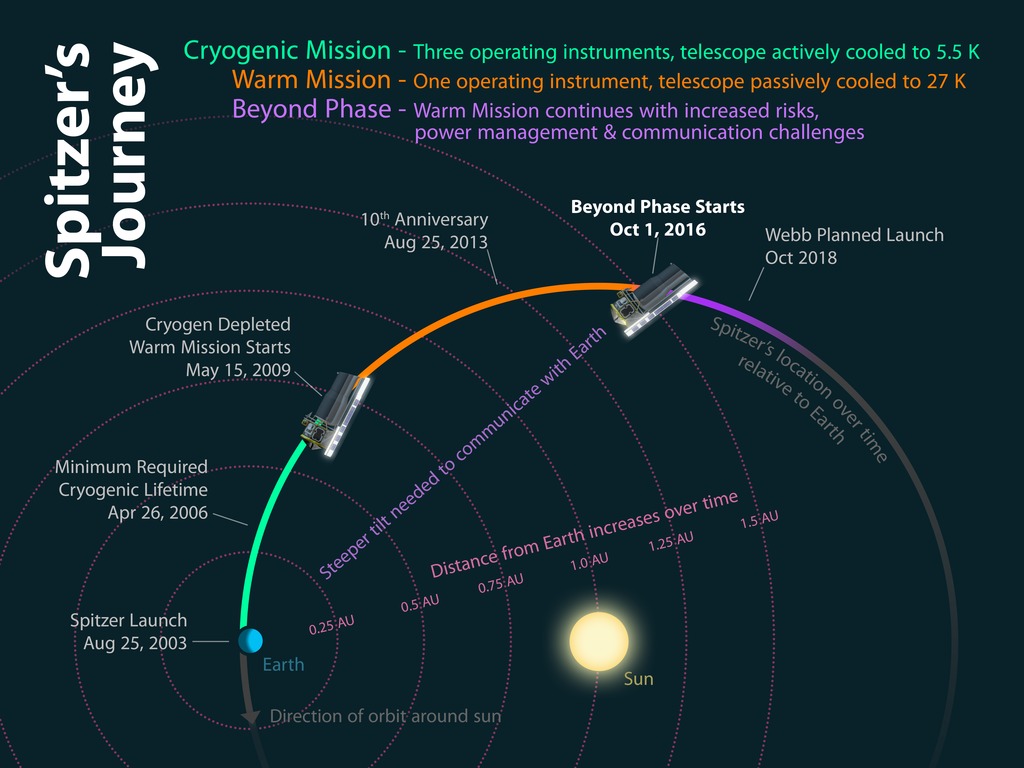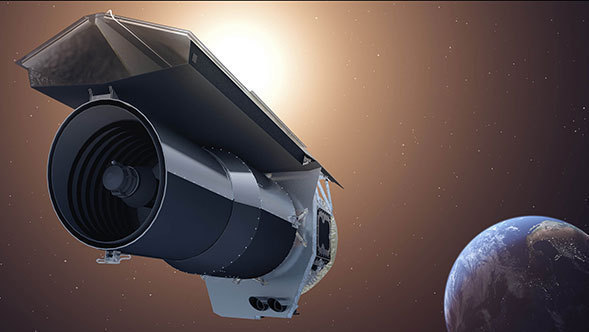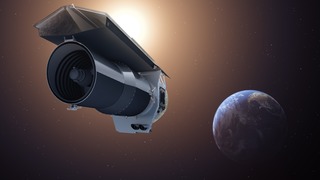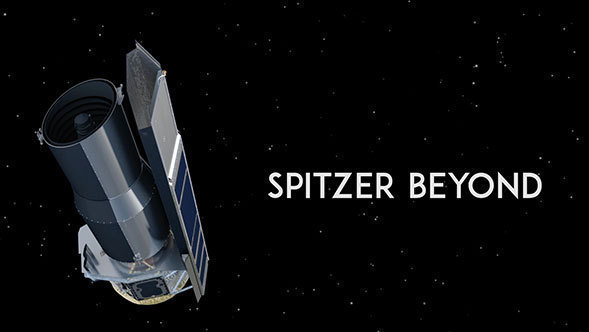
Credit: NASA/JPL-Caltech
Artwork • August 26th, 2016 • sig16-13
sig16-13
13 years into its mission of discovery, NASAs Spitzer Space Telescope faces increasing challenges as it enters the Beyond phase of its mission. This diagram shows how the different phases of Spitzers mission relate to its location relative to Earth over time.
Launched into an Earth-trailing orbit, Spitzer orbits the sun similarly to Earth. Because of its slightly larger orbit, Spitzer takes more than a year to circle the sun, causing it to drift further away from the Earth over time.
Initially Spitzer, was cooled cryogenically with liquid hydrogen, allowing its instruments to reach temperatures as low as 5.5 degrees Kelvin (-450 degrees Fahrenheit). This allowed all three of its science instruments, IRAC, MIPS, and IRS, to operate at peak efficiency.
Once the cryogen was depleted on May 15, 2009, Spitzer began its so-called Warm Mission. This was possible due to Spitzers clever engineering design to enable passive cooling that still maintains a telescope temperature of 27 Kelvin (-411 Fahrenheit). While significantly warmer than its initial state, it still enables its IRAC instrument to operate two channels at full efficiency.
As Spitzers distance from the Earth continues to increase along its orbit, it operates outside the design limits set for it at the beginning of its mission. This new phase has been dubbed Beyond as Spitzer faces new engineering challenges and risks. Chief among them are the increasing tilt required to point its primary antenna at Earth for communications, resulting in reduced power to the solar panels and additional stress to the batteries.
Spitzer's Beyond mission phase will last until the commissioning phase of NASA's James Webb Space Telescope, currently planned to launch in October 2018.
About the Object
- Name
- Spitzer Space Telescope
- Type
- Technology > Observatory > Telescope







